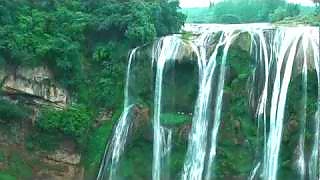 Scenes from Times Square in SuZhou 苏州
Scenes from Times Square in SuZhou 苏州
A modern and stylish shopping zone.
[640],shadow=true,start=,stop=
JiangSu map

Related Videos
Featured Videos

|
Discover the lives of various expats who now call ChengDu their home - their work, leisure and thoughts ...
|

|
In GuiZhou province.
|

|
GuangXi province.
With Living Asian ...
Bonus film - A scenic road trip between YangShuo and GuiLin, with Flip Nel ...
|

|
Filmed in 2012 ...
|

|
With MisterVaughn ...
Welcome to BeiWangShan Forest Park
Discover the natural beauty and tranquility of Beiwangshan Forest Park in Beijing.
Introduction
Beiwangshan Forest Park, located in Beijing, is a beautiful natural retreat offering a peaceful environment away from the hustle and bustle of city life. It is known for its lush greenery, scenic views, and diverse wildlife.
Location
Beiwangshan Forest Park is situated in the north-west part of Beijing, making it easily accessible from the city center.
History
Beiwangshan Forest Park was established in the late 20th century as part of Beijing's efforts to enhance urban green spaces and promote ecological conservation. The park has since become a popular destination for locals and tourists alike, offering a natural escape within the bustling city.
The development of the park included extensive tree planting, trail construction, and the establishment of various facilities to support outdoor activities and environmental education. Over the years, it has grown into a mature forest park, celebrated for its biodiversity and scenic beauty.
Attractions
Scenic Trails: Explore numerous hiking trails that offer stunning views of the forest and surrounding areas.
Observation Decks: Enjoy panoramic views from various observation decks situated within the park.
Flora and Fauna: Witness a rich diversity of plant and animal species.
Picnic Areas: Relax and have a meal in designated picnic spots.
Activities
Hiking and Nature Walks
Bird Watching
Photography
Picnicking
Camping (seasonal)
Facilities
Visitor Center
Restrooms
Parking Lots
Food Stalls
Guided Tour Services
Visitor Tips
Wear comfortable shoes for hiking.
Bring enough water and snacks.
Respect the natural environment; do not litter.
Check the weather forecast before your visit.
Follow park regulations and guidelines.
|

|
XiShuangBanNa located in the south of YunNan province, south China, is a charming international eco-tourism resort on the reaches of the Mekong river (known as the LanCang river in China), bordering with Laos and Myanmar, and adjacent to Thailand, Vietnam and Cambodia.
Esteemed for its captivating tropical landscapes and exotic cultures of the 13 native minorities, this land is home to China's largest tropical rainforest and abundant biological resources, and the Dai Water Splashing Festival (which lasts for three days from April 13 to 15).
The Six Famous Tea Mountains region, 六大茶山 (Liù Dà Chá Shān) produce some of the most highly regarded Pu-Er tea.
There are daily flights from KunMing, DaLi and ChengDu.
|

|
With Walk East ...
|

|
In recent years the traditional costumes and fashion of the majority Han ethnic group are making something of a comeback; a confidence in cultural heritage in the modern world.
There are 56 ethnic groups in China, all of which have their own traditional clothing, each with its own style and charm. Most ethnic groups wear their traditional clothing on special festivals and events. HanFu is a traditional clothing of the ethnic Han people, but it hasn't been a tradition to wear this as other ethnic groups do until recent years.
It is one way for younger Chinese to begin rediscovering their cultural roots, arts and history ...
|

|
With Wei's Travel ...
00:00 Intro 简介
02:38 Yu Garden 豫园商城-城隍庙
08:32 Nine Curve Bridge 九曲桥广场
13:40 Shanghai Old Street 上海老街
20:08 Yu Garden New Street 豫园新街
25:20 The Bund 延安东路外滩
32:17 The Bund Riverside 外滩滨江
37:53 Nanjing Road Pedestrian Street 南京路步行街
47:01 Shanghai Daimaru Mall 新世界大丸百货
01:05:05 Walking Street Plaza Bar 步行街广场酒吧
01:16:50 New World Mall 新世界商城
01:25:28 West Nanjing Road 南京西路
Bonus film - West NanJing Road, ShangHai, with Walk East ...
|
Tag search ?

 Scenes from Times Square in SuZhou 苏州
Scenes from Times Square in SuZhou 苏州




